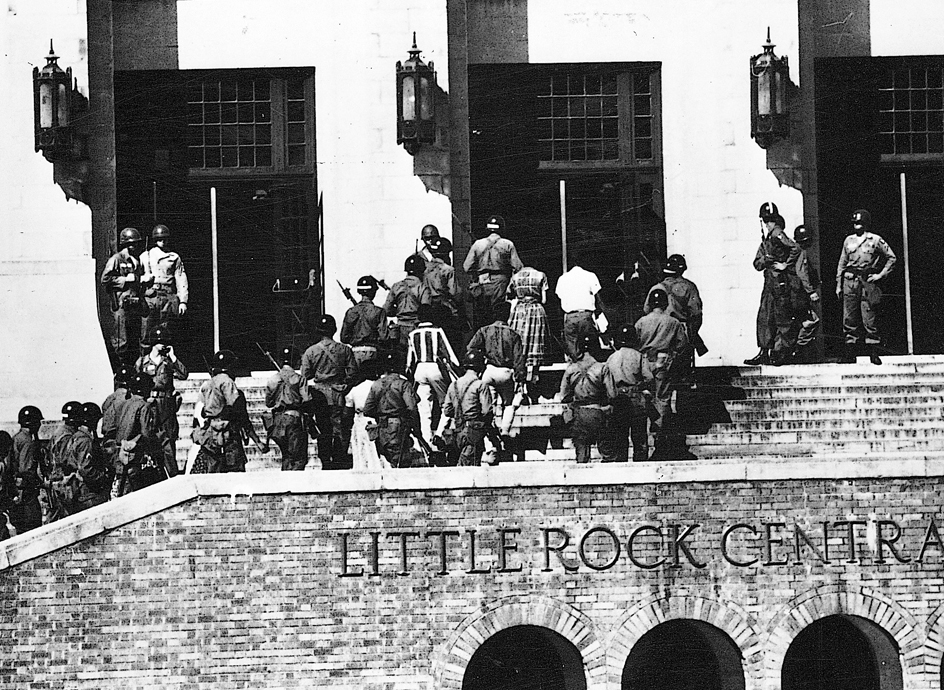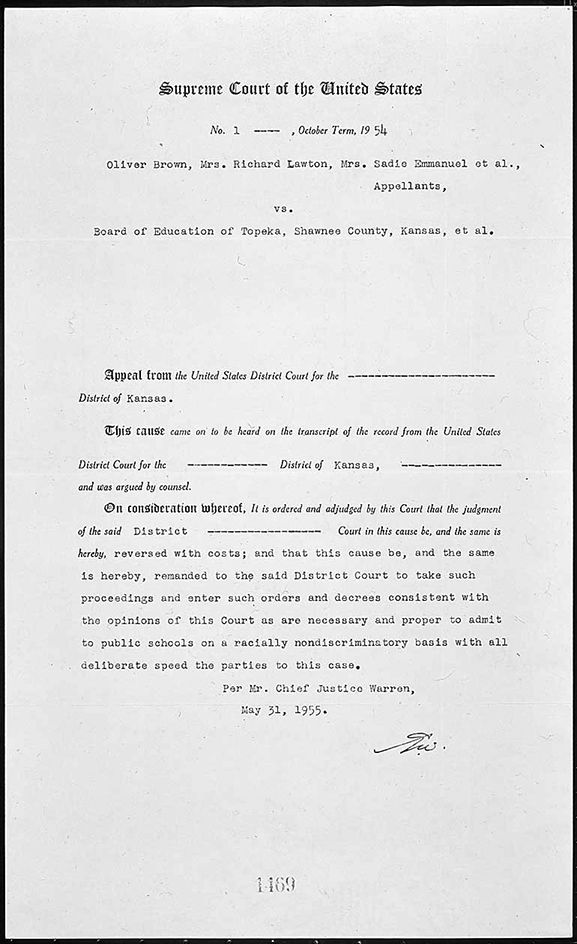Little Rock Nine were a group of nine African American students who integrated Central High School in Little Rock, Arkansas, in September 1957. Earlier that year, a federal court had removed the final legal barriers to the all-white school’s integration. However, Arkansas Governor Orval E. Faubus still tried to prevent the students from attending. Finally, President Dwight D. Eisenhower sent United States Army troops to enforce the court order and escort the children to school.

Background.
In the 1954 decision of Brown v. Board of Education of Topeka, the Supreme Court of the United States ruled that segregation in public schools was unconstitutional. The next year, the court ordered that public school desegregation be carried out “with all deliberate speed.” The Little Rock School Board adopted a plan to begin integrating Central High School in the fall of 1957.

By August 1957, school authorities had selected 17 Black students from a group of about 80 students who had applied to integrate Central High. Of the 17 students selected, 8 decided to attend the all-Black Horace Mann High School. The remaining 9 were Minnijean Brown, Elizabeth Eckford, Ernest Green, Thelma Mothershed, Melba Pattillo, Gloria Ray, Terrence Roberts, Jefferson Thomas, and Carlotta Walls. All of the members of the Little Rock Nine had previously attended all-Black schools. Daisy Bates, the state president of the National Association for the Advancement of Colored People (NAACP), a civil rights group, became the students’ adviser.
Integration.
On the morning of Sept. 4, 1957, the Little Rock Nine were scheduled to enter Central High. However, National Guardsmen blocked their way on orders from Governor Faubus. Faubus had warned that “blood will run in the streets” if the Black students tried to enter the school. The students planned to attempt to enter the school together, but one of the students, Elizabeth Eckford, did not receive word of the plans. She tried to enter the school on her own but could not. Photographs of Eckford, who appeared calm in the face of threats and taunts from a white mob, made her a symbol of the struggle for civil rights in the United States.
On September 24, President Eisenhower put the National Guard troops of Arkansas under federal control and sent the U.S. Army to enforce the court-ordered integration of Central High. The following day, Army troops escorted the students into the school. Protests continued outside the school.
Throughout the school year, the Black students were threatened and harassed, often by a group of segregationist white students. Minnijean Brown suffered some of the worst harassment. She was expelled in early 1958 for retaliating to attacks from white students. Brown later completed high school in New York City.
On May 27, 1958, Ernest Green, the only senior of the nine, became the first African American to graduate from Central High. However, state and school authorities continued their efforts to block or delay integration. In September, in response to a Supreme Court ruling that integration in Little Rock must continue, Governor Faubus ordered the city’s public high schools to close for the school year. When the schools reopened in 1959, two of the original nine, Jefferson Thomas and Carlotta Walls, returned to Central High for their senior year. By the early 1970’s, nearly all public schools in Arkansas had integrated.
In 1958, the members of the Little Rock Nine and Daisy Bates were awarded the NAACP’s Spingarn Medal for their contributions to the cause of civil rights. In 1999, the members of the Little Rock Nine received the Congressional Gold Medal. The medal is one of the nation’s highest civilian awards.
